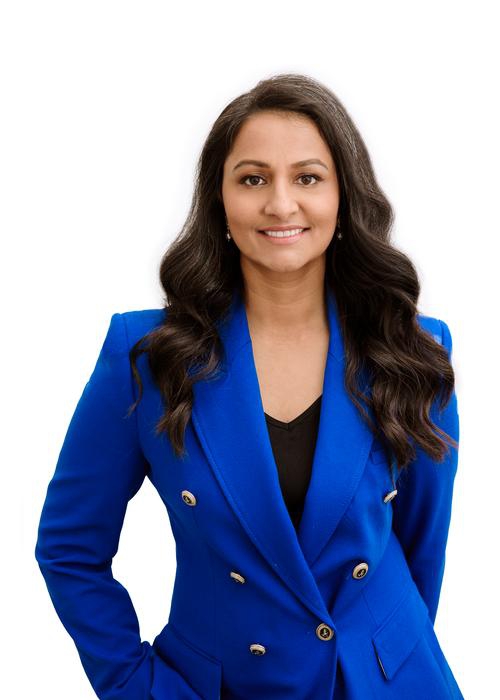
You buckled your seatbelt, adjusted your mirrors, and drove carefully, but the other driver didn’t. Now you're dealing with persistent shoulder pain that won’t go away, and you're wondering what shoulder pain means after a car accident. The answer might surprise you: if you're a woman, you're statistically more likely to experience shoulder and neck injuries after a car crash than male drivers.
Seattle car accident attorney Preet Kode has seen this pattern repeatedly in practice, and emerging research backs up what injury lawyers have observed for years. Understanding why this happens—and what it means for your recovery and potential claim—can make all the difference in getting the care and compensation you deserve. If your pain persists after a crash, consulting an experienced shoulder injury lawyer can help protect your rights and ensure your injuries are fully evaluated.
Table of Contents
Why Do Women Experience More Shoulder Injuries in Car Crashes?
The disparity isn't coincidental. Several biological and structural factors contribute to women's increased vulnerability to shoulder and upper body injuries after a car accident.
Physical Differences That Increase Injury Risk
Women have different muscle mass distribution and bone density compared to men, affecting how forces transfer through the body during impact. The shoulder joint relies heavily on surrounding muscles for stability, and differences in muscle development can influence injury patterns.
Additionally, average height differences mean many women sit closer to the steering wheel and airbag deployment zone. This positioning can alter how crash forces affect the shoulder and neck region, particularly during frontal collisions.
Seatbelt Positioning and Vehicle Design
Standard seat belt systems position the shoulder strap across areas that may not provide optimal protection for women's body shapes. The belt often crosses the neck or chest in ways that can cause additional injuries during crashes, rather than properly distributing impact forces across stronger skeletal structures.
Airbags deploy based on calculations designed for male-sized occupants. Women, who are typically shorter and sit closer to the steering wheel, may be positioned too close to airbag deployment zones. This proximity can turn a life-saving device into a source of additional trauma, causing facial fractures, chest injuries, and arm trauma.
What Types of Shoulder Injuries Occur Most Often?
Car crash shoulder injuries range from minor strains to severe tears requiring surgical intervention. Here are some examples of injuries we most often see after Seattle car accidents:
- Rotator cuff tears. These tears can make it difficult or impossible to lift your arm above your head or reach behind your back. Many women experience a deep, dull ache in the shoulder that worsens at night and disrupts sleep.
- AC (acromioclavicular) joint injuries. The joint connecting your collarbone to your shoulder blade can become separated or dislocated during impact. This causes sharp pain, limited mobility, and sometimes a visible bump on top of the shoulder. Even after healing, chronic pain or arthritis can develop.
- Shoulder fractures. Direct trauma from a crash can break bones in the shoulder, such as the clavicle (collarbone) or scapula (shoulder blade). These fractures often require immobilization and, in severe cases, surgical repair with plates, screws, or pins.
- SLAP (Superior Labral Anterior to Posterior) tears. This type of tear affects the ring of cartilage surrounding the shoulder socket. It often occurs when someone braces for impact with their arms extended. Symptoms include catching sensations, limited motion, and pain during overhead movements.
- Shoulder impingement. The force of a collision can pinch soft tissues between shoulder bones, leading to inflammation, swelling, and pain when raising the arm. Without treatment, impingement can worsen into a rotator cuff tear.
- Shoulder dislocation. A powerful crash impact can push the ball of the upper arm bone out of the shoulder socket. This causes intense pain, visible deformity, and weakness until the joint is properly relocated and stabilized.
How Gender Bias Affects Injury Claims
Here's an uncomfortable truth: when women describe their pain after car accidents, they're often met with skepticism that male patients don't face. Studies show medical professionals and insurance adjusters may dismiss women's symptoms as "emotional" or "exaggerated," while similar complaints from men are taken at face value.
This bias doesn't just hurt—it costs money. When your initial emergency room visit downplays your neck pain as "minor whiplash," that note follows you through every insurance negotiation. Suddenly, what should be a straightforward claim becomes an uphill battle to prove your injuries are real and deserving of compensation.
The solution isn't pleasant, but it's necessary: women often must fight harder for proper medical care and documentation. Push for that MRI when doctors suggest "wait and see." Request referrals to specialists when your primary care physician recommends only rest. Keep a daily journal documenting every headache, every sleepless night, every task you can no longer perform.
Your detailed records are ammunition against gender bias. When insurance adjusters question whether your injuries really prevent you from working, those documented limitations tell a story that's harder to dismiss. Physical therapy evaluations, specialist consultations, and diagnostic imaging create an undeniable paper trail that transforms subjective pain reports into objective medical evidence your attorney can use to secure fair compensation.
Taking Legal Action After a Shoulder Injury
This is where working with Seattle car accident attorney Preet Kode makes a real difference. As a female attorney, she understands firsthand how women's pain gets dismissed and injury claims get undervalued. She knows that your shoulder injury affects everything—from carrying groceries to lifting your children to sleeping through the night. More importantly, she knows how to make insurance companies understand that too.
Preet has seen how gender bias plays out in settlement negotiations, and she's equipped to counter every attempt to downplay your injury. When adjusters suggest your shoulder pain is "typical for women" or "probably stress-related," she has the legal firepower to set them straight.
Your pain is absolutely real, your injury definitely matters, and you deserve both proper medical care and full compensation. Don't let anyone—medical professionals, insurance adjusters, or opposing attorneys—convince you otherwise.

